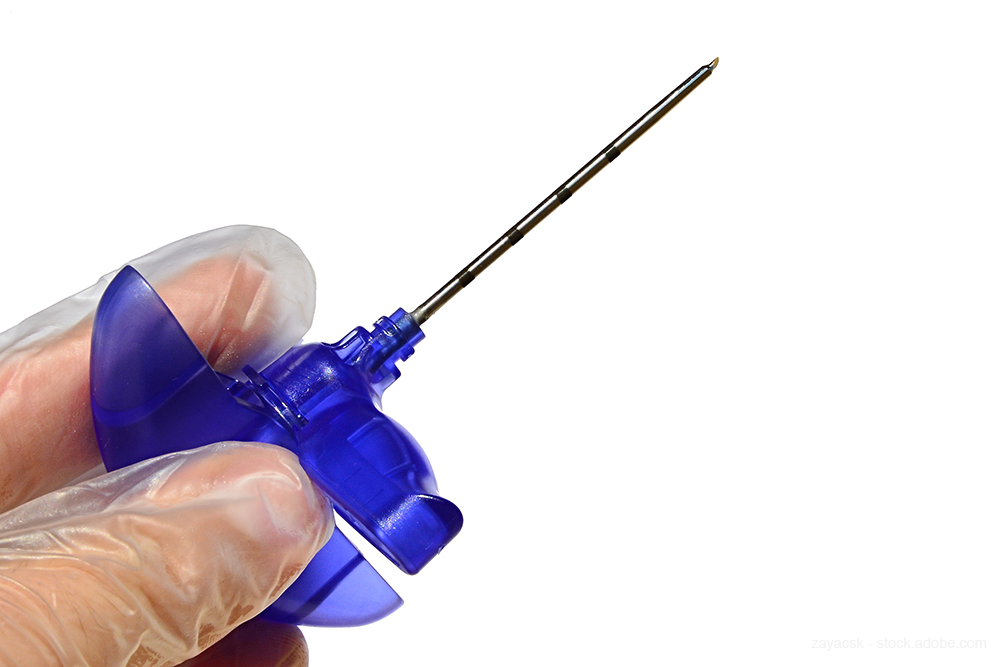Robot Arm Helps with Diagnostic Bone Biopsies
Automated robotic arm–assisted FDG PET/CT-guided real-time bone biopsy is feasible and safe.

Using automated robotic arm–assisted FDG PET/CT-guided real-time bone biopsy provides clinicians with a very high diagnostic yield, according to a study published in the American Journal of Roentgenology.
Researchers from India performed a prospective study to determine the feasibility, safety, diagnostic performance, and clinical impact of real-time intraprocedural 18F-FDG PET/CT-guided automated robotic arm–assisted biopsy of hypermetabolic marrow or bone lesions.
Forty-seven men and 26 women who underwent PET/CT-guided biopsy of accessible hyper-metabolic marrow or bone lesions participated in the study.
Related article: Study: False-Positive Breast Biopsies Cost $2 Billion Annually
The automated robotic arm assisted with insertion of the biopsy needle into the target lesion and tissue sampling was performed at the site with the highest metabolic activity, after the needle position was confirmed using PET/CT. The researchers reviewed the results of histopathologic examination and clinical and imaging follow-up examinations, and they interviewed referring physicians to assess the clinical impact of interventions on treatment planning.
The results showed that 34 of the 73 patients assessed were oncology patients with suspected metastasis or residual disease. The pathologic diagnosis was not known for 38 patients; 7 with clinically suspected benign and 31 with malignant disease. The remaining patient was suspected of having skeletal sarcoidosis.
Thirty-nine marrow lesions and 34 bone lesions were targeted. All procedures were technically successful and safe, and no major complication was observed. Pathologic diagnosis was confirmed for 72 patients, for a diagnostic yield of 98.6%. For the 54 malignancies, results were:
- Sensitivity: 98.2%
- Specificity: 100%
- Positive predictive value: 100%
- Negative predictive value: 94.7%
- Accuracy: 98.6%
The procedure was helpful in determining the treatment plan for 91.7% of patients.
The researchers concluded that use of an automated robotic arm–assisted FDG PET/CT-guided real-time bone biopsy was feasible and a safe intervention with a very high diagnostic yield. The procedure also had a major clinical impact on patients with minimal residual FDG uptake on end-of-treatment PET/CT and isolated suspected metastatic lesions.
Meta-Analysis Shows Merits of AI with CTA Detection of Coronary Artery Stenosis and Calcified Plaque
April 16th 2025Artificial intelligence demonstrated higher AUC, sensitivity, and specificity than radiologists for detecting coronary artery stenosis > 50 percent on computed tomography angiography (CTA), according to a new 17-study meta-analysis.
The Reading Room: Racial and Ethnic Minorities, Cancer Screenings, and COVID-19
November 3rd 2020In this podcast episode, Dr. Shalom Kalnicki, from Montefiore and Albert Einstein College of Medicine, discusses the disparities minority patients face with cancer screenings and what can be done to increase access during the pandemic.
Could Lymph Node Distribution Patterns on CT Improve Staging for Colon Cancer?
April 11th 2025For patients with microsatellite instability-high colon cancer, distribution-based clinical lymph node staging (dCN) with computed tomography (CT) offered nearly double the accuracy rate of clinical lymph node staging in a recent study.